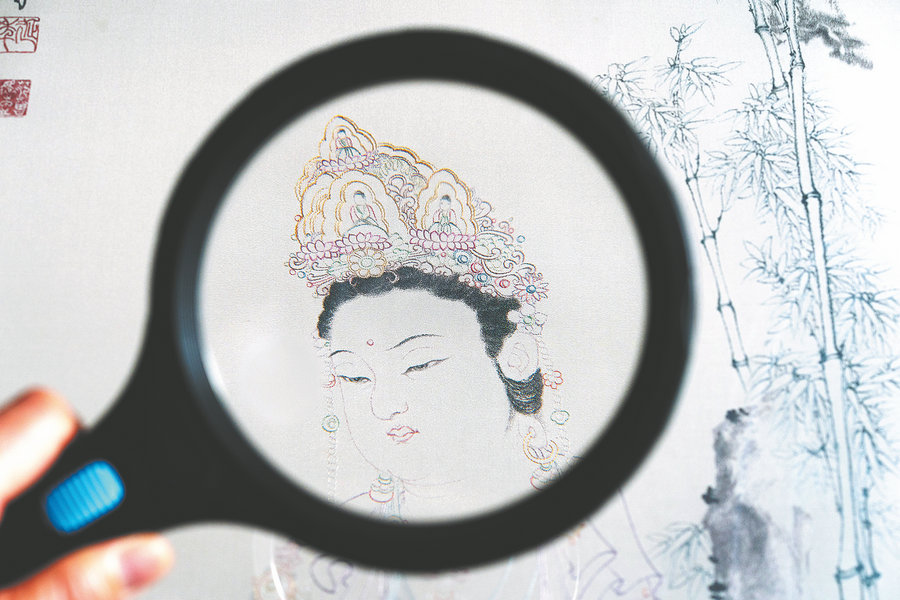

While the Zhang family tries to explore a modern artistic expression of the centuries-old craft, the younger generation, like Guo Zizhou, 27, is using a popular method to introduce young people to Su embroidery.
Born into a family where all the women are good at Su embroidery, in 2019, Guo opened a themed coffee shop in Suzhou. The latte art comes from patterns frequently used in Su embroidery, such as birds, flowers and trees.
Guo displays many of his mother's embroidery works at the coffee shop and, sometimes, they will hold classes in Su embroidery and invite customers to try the stitching techniques.

Guo is now learning Su embroidery from his mother, Zou Yingzi, whose works are collected by renowned institutions, including the British Museum. Traditionally, Su embroidery is learned by women and passed down among the female members of a family. Guo is one of the few male exceptions.
"My friends all think what I do is chic and cool," says Guo in front of an embroidery stand, moving his needle fluidly through a piece of landscape embroidery.
Guo learned interior design in Britain and earned his master's degree in art in the United States. Only after he returned to China did he decide to inherit the Su embroidery craft from his mother.
Since childhood, the needle has been a common item in his life. Every day he saw his grandmother, his mom and her friends engrossed in Su embroidery.
"When I was a little boy, the needle was an item that could hurt my fingers. Now it has become a tool for me to continue the artistic mission of my family. I find that incredible," says Guo.
In the past few years, Guo has participated in his mother's team to produce large-scale Su embroidery works, two of which were collected by the China National Archives of Publications and Culture.
Each piece stands more than 3 meters high and is 1 meter long, featuring feitian (flying deities) and a traditional building that houses Buddhist sutras, derived from murals at the Mogao Caves in Dunhuang.
Guo helped his mother to finish the two art pieces, which took more than 100 embroiderers several months to produce.
"Without his help, I couldn't have finished the two large pieces. I'm proud of my son. He often gives me fresh and interesting ideas to create innovative Su embroidery works," says Zou.
The son adds that his ideas often collide with his mother's.
In Zou's 24 Solar Terms series, Guo often provides ideas on how to present the theme in a contemporary way. For instance, in the work Guyu (Grain Rain), Guo designed a giant grain while his mother planned to stitch the grains to scale.
Finally, Zou took her son's design, and believes that the piece turned out "amazing".
"I hope the craft can become more integrated into people's daily lives, rather than just being displayed as a decoration or art piece," Guo says.